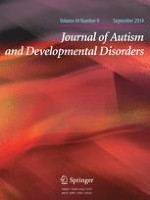01-09-2014 | Brief Report
Brief Report: Can Metrics of Reporting Bias Enhance Early Autism Screening Measures?
Gepubliceerd in: Journal of Autism and Developmental Disorders | Uitgave 9/2014
Log in om toegang te krijgenAbstract
The goal of the current study was to develop and pilot the utility of two simple internal response bias metrics, over-reporting and under-reporting, in terms of additive clinical value within common screening practices for early detection of autism spectrum disorder risk. Participants were caregivers and children under 36 months of age (n = 145) participating in first-time diagnostic appointments across our clinical research center due to developmental concerns. Caregivers were asked to complete the Modified Checklist for Autism in Toddlers (MCHAT) as well as a questionnaire embedding six response bias indicator questions. These questions were items that in previous clinical studies had been endorsed by an overwhelming majority of parents within clinically identified populations. Results indicated that removal of self-reports indicative of potential response bias dramatically reduced both false positives and false negatives on the MCHAT within this sample. This suggests that future work developing internal metrics of response bias may be promising in addressing limits of current screening measures and practices.
